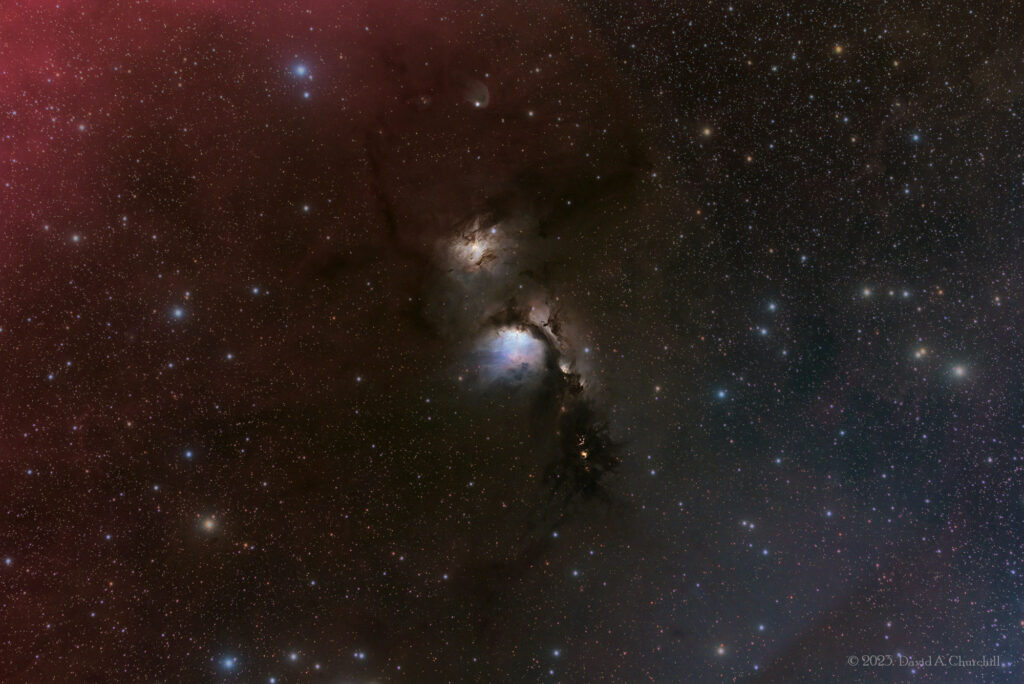Messier 78
Reflection Nebula, Orion
- Description
- Technical
- Links
Messier 78 or M78, also known as NGC 2068, is a reflection nebula in the constellation Orion. It was discovered by Pierre Méchain in 1780 and included by Charles Messier in his catalog of comet-like objects that same year.
M78 is the brightest diffuse reflection nebula of a group of nebulae that includes NGC 2064, NGC 2067 and NGC 2071. This group belongs to the Orion B molecular cloud complex and is about 1,350 light-years distant from Earth. M78 is easily found in small telescopes as a hazy patch and involves two stars of 10th and 11th magnitude. These two B-type stars, HD 38563 A and HD 38563 B, are responsible for making the cloud of dust in M78 visible by reflecting their light.
The M78 cloud contains a cluster of stars that is visible in the infrared. Due to gravity, the molecular gas in the nebula has fragmented into a hierarchy of clumps, whose cores have masses ranging from 0.3 M☉ to 5 M☉. About 45 variable stars of the T Tauri type, young stars still in the process of formation, are members as well. Similarly, 17 Herbig–Haro objects are known in M78.
Telescope: Astro Physics 155EDF (TCC) f5.4
Mount: Astro Physics 1600GTO
Camera: FLI PL29050 / CFW2-7
Guider: Agena Starguide II / ZWO ASI178MM
Filters: Astrodon II 50mm LRGB
L: 48×10 mins = 480 mins, R: 24×10 mins = 240 mins, G: 19×10 mins = 190 mins, B: 24×10 mins = 240 mins
Total Imaging Time: 19h 10m
Data Imaged remotely over 6 nights during January 2023.
Imaged from Observatorio El Sauce, Chile, in partnership with Fred Espenak.
Data acquisition & Processing by David Churchill.
None

